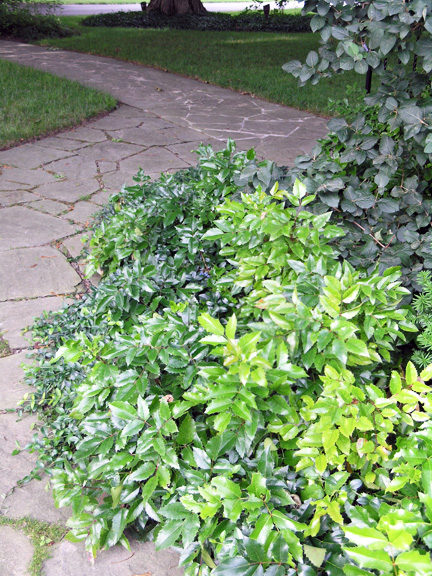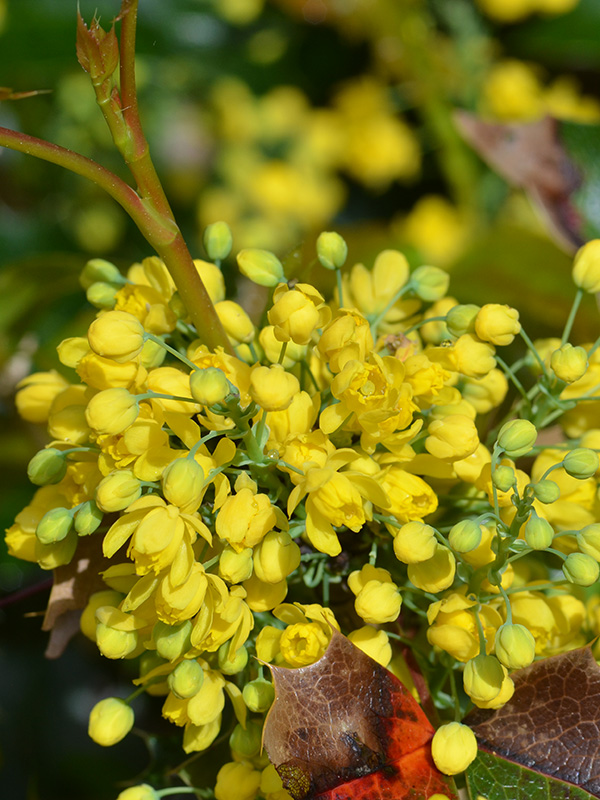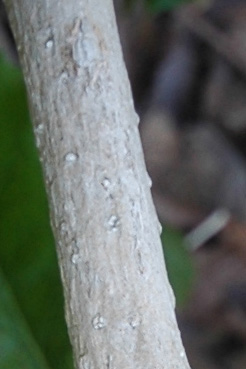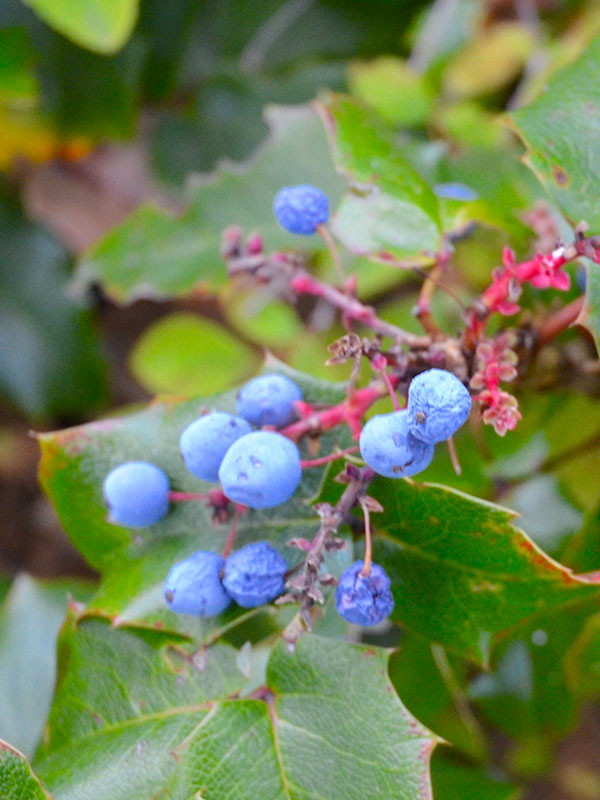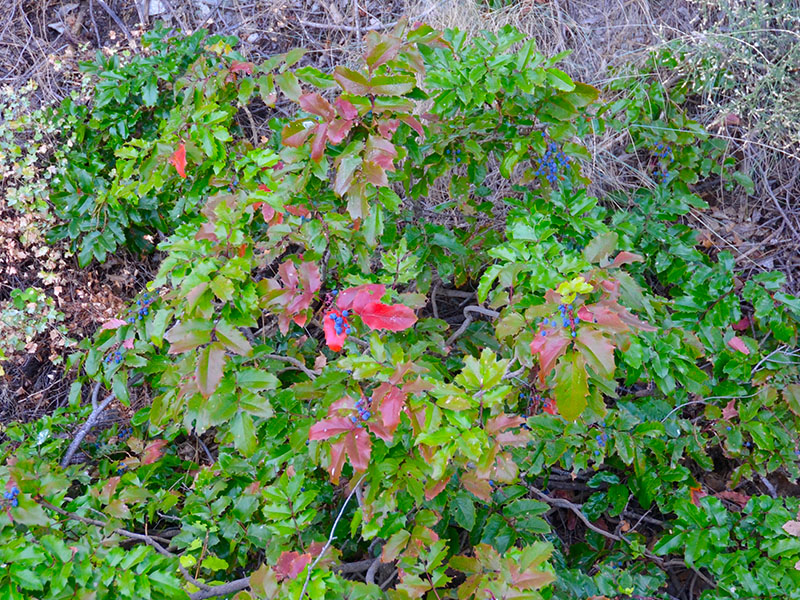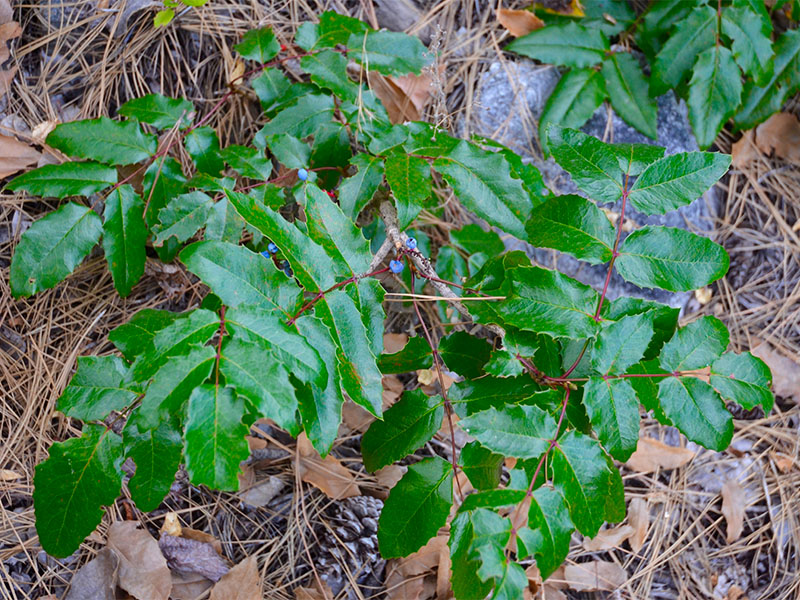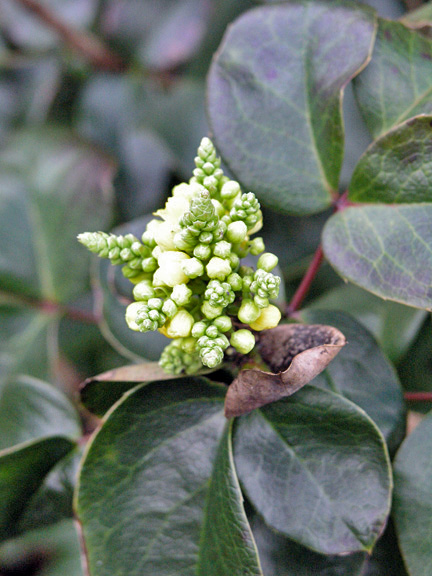
Woody > Berberis > Berberis repens > Berberis repens
Berberis repens
Creeping Mahonia
Origin: Western coastal North America.
| Family |
| Berberidaceae |
| Genus |
| Berberis |
| Species |
| repens |
| Category |
| Woody |
| Type |
| Shrub (evergreen) |
| Synonyms |
| Mahonia repens (Name changed to Berberis repens in 2019) |
| USDA Hardiness Zone |
| 5 - 8 |
| Canadian Hardiness Zone |
| 4a - 8a |
| RHS Hardiness Zone |
| H4 - H7 |
| Temperature (°C) |
| -29 - (-7) |
| Temperature (°F) |
| -20 - 20 |
| Height |
| 22 - 30 cm |
| Spread |
| 22 - 45 cm |
Photographs
Description and Growing Information
Flowering Period
| General Description |
| An evergreen woody groundcover. |
| Landscape |
| Use as borders, as a container plant, in erosion control, in woodland gardens and general groundcover. |
| Cultivation |
| Plant under partial shade in moist, very well-drained slightly acidic soils. |
| Shape |
| Low mat-forming. |
| Growth |
| Medium |
| Pests |
| Leaf spot, powdery mildew and rust. |
| Habitat |
| Hills, dry slopes, and canyons. Coniferous forests, oak woodlands and chaparral. |
| Bark/Stem Description |
| Young bark is smooth, but develops ridges and furrows as it matures. Young twigs are covered with a waxy coating that appears shiny. |
| Leaf Description |
| Leaves are variable, and pinnately compound, with 5 - 7 leaflets 2 - 7 cm long. The leaves are arranged alternately along the stem, attached by 1 - 6 cm petioles. |
| Flower Description |
| Flowers are in branched clusters at the sides or tips of branches. Each flower has 9 sepals produced in 3 tiers and 6 petals produced in 2 tiers of 3 petals. |
| Fruit Description |
| Berries are round-to-elliptical, measuring 7 - 14 mm long and are covered with a waxy coating. |
| Colour Description |
| Leaves are bluish-green in summer and turn a rich purplish-red in the winter. In midsummer yellow flowers are borne. The flowers develop into purplish-black berries. Bark appears to be green-to-purple in colour. |
| Texture Description |
| Coarse. |
| Notable Specimens |
| The A.M. (Mac) Cuddy Garden, Strathroy, Ontario, Canada. UBC Botanical Garden, University of British Columbia, Vancouver, British Columbia, Canada. |
| Propagation |
| Seed, cuttings and division of underground rhizomes. |
